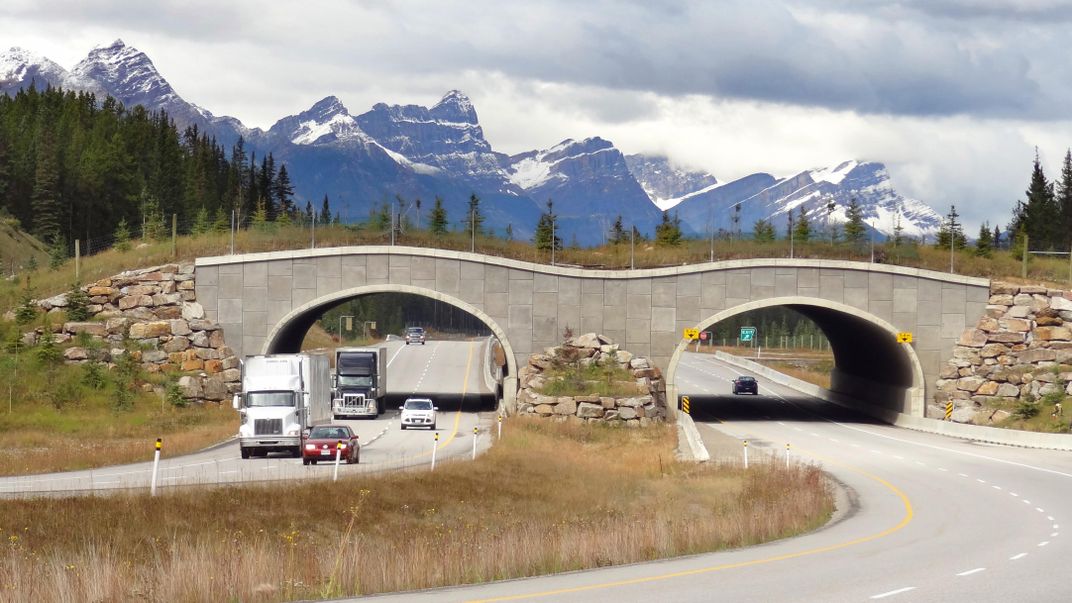Roadkill Reduced During Lockdowns, but Traffic Is Increasing Again
California, Idaho and Maine saw considerably fewer roadkill deaths in the first few weeks of stay-at-home orders
/https://tf-cmsv2-smithsonianmag-media.s3.amazonaws.com/filer/fb/c4/fbc4a031-eff3-44bb-8f30-c2d1e1621874/2020_jun30_moosecrossing.jpg)
A report from the University of California, Davis shows that with drivers under stay-at-home orders, fewer large animals died by vehicle strikes.
The researchers focused on the first four weeks of stay-at-home orders in California, Idaho and Maine, which have strong programs for tracking wildlife collisions, Cheryl Katz reports for National Geographic. The large wildlife killed most often by drivers are deer, elk and moose, but the study also highlights the effect on California’s mountain lions. But as lockdowns are beginning to lift, traffic is increasing again and the researchers expect roadkill rates to return to normal.
“In this case, there’s a tiny, tiny silver lining of the coronavirus that has slowed cars down or has reduced the number of cars” on the road, wildlife research veterinarian Winston Vickers, also director of the California Mountain Lion Project at the UC Davis Wildlife Health Center, tells National Geographic. “That may reduce the mortality a little bit in this particular year.”
And it’s not only wildlife that has benefited from the drop in traffic. Domestic animals like livestock also saw a dramatic decrease in deaths by car crashes. And in years past, on average about 200 people die each year in the U.S. because of collisions with wildlife, National Geographic reports.
With a lower rate of wildlife collisions, that number might go down this year. Although as Tanya Mohn reports for the New York Times, a drop in car use has not necessarily led to fewer car crash fatalities because, on average, drivers are driving faster than before.
The study by UC Davis compared this year’s reported roadkill rates to around the same time of year in 2015 through 2019. In Idaho, wildlife fatalities by car crashes fell by almost 40 percent, according to the study. Most animals killed by cars are deer and elk. And in Maine, which had the highest daily roadkill rate of more than 15 animals per day on average, the stay-at-home order reduced roadkill by 45 percent.
"The longer it lasts, the more animals that would have died are not dying," UC Davis ecologist and lead author of the report Fraser Shilling tells National Geographic.

Before a stay-at-home order was issued on March 19, car crashes killed about eight large animals per day in California, Jessica Flores reports for USA Today. In the first four weeks of the stay-at-home order, the daily rate of roadkill dropped by about 20 percent. Mountain lion deaths alone declined by 58 percent, the most out of all of the animals tracked in the study.
“Given the five to nine-fold underreporting of large animals involved in collisions with vehicles and the lack of systematic reporting of smaller animals killed on roads, the positive impacts we report are likely to be just the tip of the iceberg,” the researchers write in the study.
The change is especially impactful to small populations of mountain lions in Southern California, threatened by habitat loss and wildfire, per San Francisco’s local CBS station. The California Fish and Game Commission voted earlier this year to temporarily protect the mountain lions under California’s Endangered Species Act.
Ecologist Renee Seidler, executive director of the Jackson Hole Wildlife Foundation, tells National Geographic that the UC Davis report may help people see the benefit of adding infrastructure to highways for wildlife. Tunnels under highways or bridges over them can connect fragmented habitat without pushing animals to try to cross a busy road.
“It’s expensive, it’s a huge change on the landscape, it can be really stressful for the animals at some level,” she tells National Geographic. “But it may be one of the best solutions, because human nature is incredibly hard to change. It’s way easier to change wildlife behaviors.”
For now, the researchers expect traffic to return to normal as lockdowns begin to lift. In mid-June, California entered Phase 3 of lifting its restrictions and has since reversed some of its policies, Maine is currently reopening and Idaho has paused its reopening efforts, per the New York Times. USA Today reports that summer travel this year may only be down by 15 percent